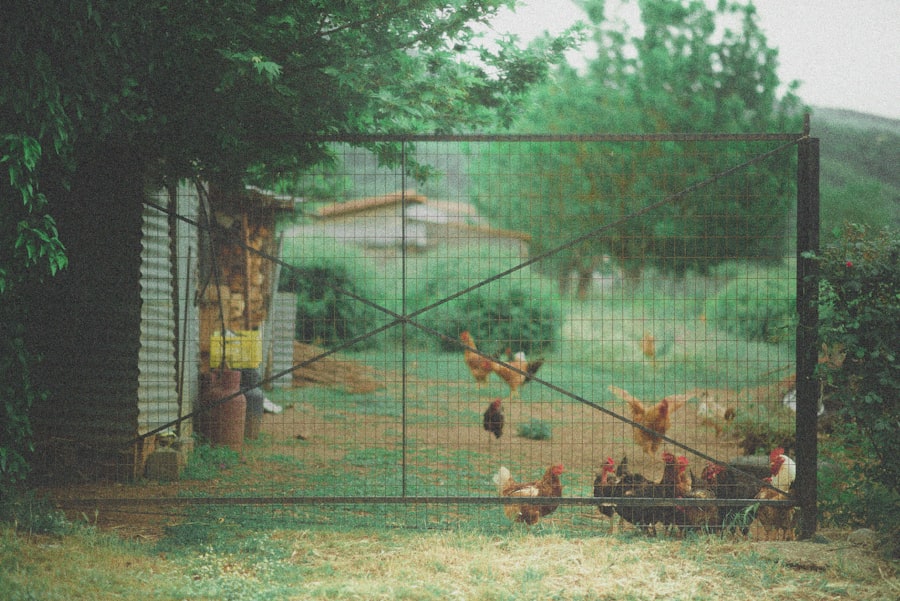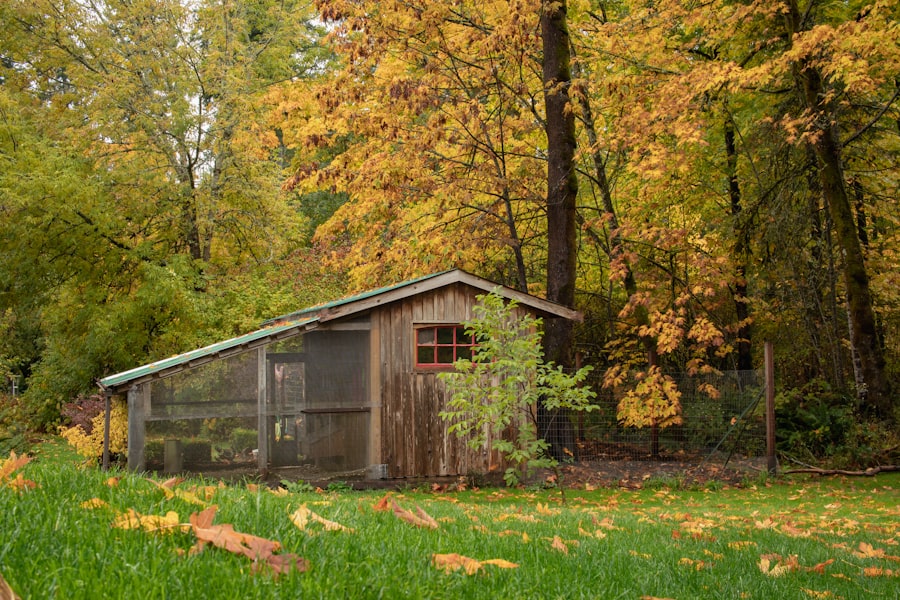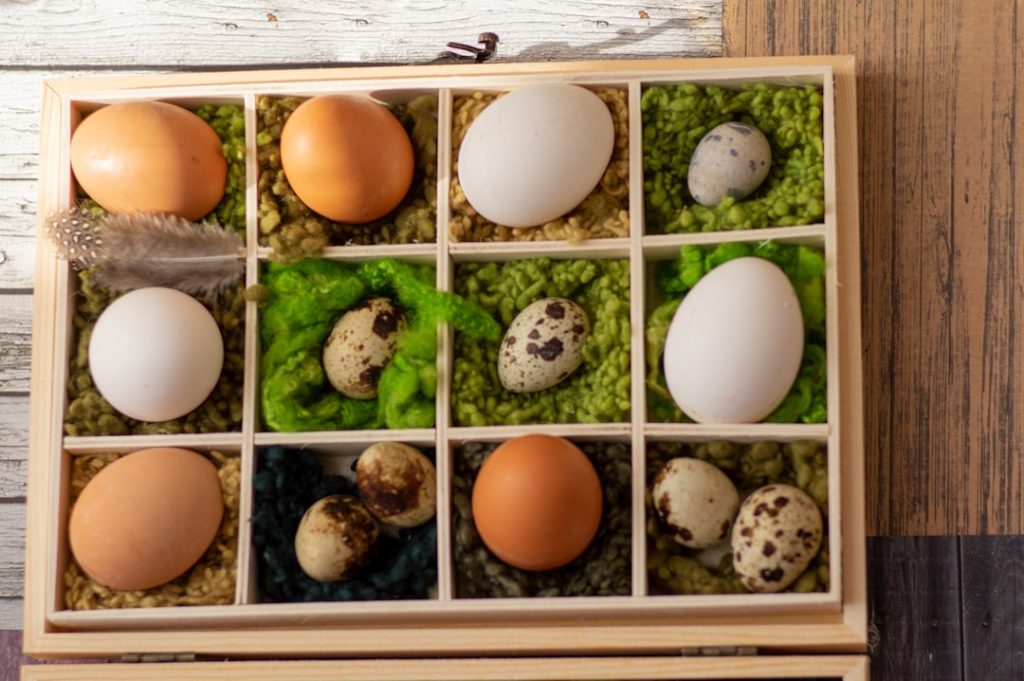Grower feed is a specialized feed formulated for growing poultry, including chickens, turkeys, and ducks, during the intermediate stage between starter and layer feed. This stage typically occurs when birds are 8-12 weeks old, varying by breed and species. The feed is designed to provide essential nutrients, vitamins, and minerals for healthy growth and development.
Grower feed contains higher protein levels than starter feed, crucial for muscle development and overall growth. It has lower calcium levels compared to layer feed to prevent potential kidney damage in young birds. The primary purpose of grower feed is to support the transition from rapid growth to the egg-laying phase.
The composition of grower feed typically includes a balanced blend of grains, protein sources (such as soybean meal or fish meal), vitamins, and minerals. Formulations may vary depending on the specific needs of different bird species and breeds. For example, turkeys may require a different nutrient profile than chickens.
Choosing high-quality grower feed from reputable suppliers is important to ensure birds receive necessary nutrients for healthy growth. Some growers opt for organic or non-GMO feed to align with their farming practices and meet consumer demand for organic poultry products. Understanding the purpose and composition of grower feed is essential for optimal growth and development of young poultry.
Table of Contents
Key Takeaways
- Grower feed is designed to meet the nutritional needs of young poultry as they transition from starter feed to adult feed.
- When transitioning from starter feed to grower feed, it is important to do so gradually over a period of 1-2 weeks to allow the birds to adjust.
- The length of time on grower feed varies depending on the type of poultry and their growth rate, but it typically ranges from 8-16 weeks.
- Nutritional needs during the grower stage include higher protein levels to support muscle and feather development, as well as essential vitamins and minerals.
- Monitoring growth and development is crucial during the grower stage to ensure that the birds are healthy and thriving.
- Factors influencing the duration of grower feed include breed, growth rate, and intended purpose of the poultry (e.g. meat production or egg laying).
- Transitioning to layer feed should occur around 18-20 weeks of age for laying hens, as they require specific nutrients to support egg production.
Transitioning from starter feed to grower feed
Timing is Everything
The transition from starter feed to grower feed is a crucial step in the development of young poultry. This transition typically occurs when the birds are around 8-12 weeks old, depending on their breed and species. It’s essential to monitor the birds’ growth and development closely to determine the optimal timing for transitioning to grower feed.
A Gradual Transition is Key
When transitioning from starter feed to grower feed, it’s important to do so gradually to allow the birds’ digestive systems to adjust to the new feed. Abrupt changes in diet can lead to digestive upset and decreased feed intake, which can negatively impact growth and development. To facilitate a smooth transition, growers can gradually introduce small amounts of grower feed into the birds’ diet while reducing the amount of starter feed over a period of 7-10 days.
Supporting Proper Digestion and Health
Providing access to clean, fresh water at all times is essential during this transition period to support proper digestion and overall health. By carefully managing the transition from starter feed to grower feed, growers can help ensure that their young poultry receive the nutrients they need for healthy growth and development.
Determining the length of time on grower feed

The length of time that poultry should be kept on grower feed can vary depending on several factors, including the breed, species, growth rate, and intended purpose of the birds. In general, most poultry will remain on grower feed until they reach sexual maturity, which typically occurs around 16-20 weeks of age for chickens. However, this timeline can vary significantly depending on the specific breed and species of poultry.
For example, some slower-growing heritage breeds may require a longer period on grower feed compared to fast-growing commercial breeds. Additionally, turkeys and ducks may have different nutritional requirements and growth timelines compared to chickens. It’s important for growers to consult breed-specific guidelines and recommendations to determine the appropriate length of time for their particular flock.
Another factor that can influence the length of time on grower feed is the intended purpose of the birds. For example, if the poultry are being raised for meat production, they may be transitioned to a finisher or broiler feed after reaching a certain weight or age. On the other hand, if the birds are being raised for egg production, they may transition directly from grower feed to layer feed once they reach sexual maturity.
Monitoring the birds’ growth and development is crucial for determining when they are ready to transition to the next stage of feed. This may involve regularly weighing the birds, assessing their overall health and condition, and observing their behavior and egg-laying patterns if applicable. By carefully considering these factors, growers can determine the optimal length of time for their poultry to remain on grower feed.
Nutritional needs during the grower stage
The grower stage is a critical period in a bird’s development, as it sets the foundation for healthy growth and prepares them for their future role as layers or meat producers. During this stage, poultry have specific nutritional needs that must be met to support optimal growth and development. One of the key nutritional requirements during the grower stage is protein.
Protein is essential for muscle development, feather growth, and overall body maintenance in young birds. Grower feeds are formulated with higher levels of protein compared to starter feeds to support the birds’ increasing muscle mass and skeletal development during this stage. In addition to protein, young poultry also require a balanced blend of vitamins and minerals to support their overall health and well-being.
For example, vitamin D is crucial for calcium absorption and bone development, while vitamin E plays a role in immune function and antioxidant protection. Minerals such as calcium and phosphorus are also important for skeletal development and eggshell formation in future layers. Grower feeds are carefully formulated to provide these essential nutrients in appropriate amounts to meet the specific needs of growing poultry.
It’s important for growers to select high-quality grower feeds that are specifically designed to meet the nutritional requirements of their particular bird species and breed. By providing a well-balanced diet during the grower stage, growers can help ensure that their young poultry receive the nutrients they need for healthy growth and development.
Monitoring growth and development
Monitoring the growth and development of young poultry is essential for ensuring that they receive the appropriate care and nutrition during the grower stage. There are several key indicators that growers can use to assess the progress of their birds and make informed decisions about their management and feeding practices. One important aspect of monitoring growth and development is regularly weighing the birds to track their growth rate over time.
This can help growers identify any potential issues or deviations from expected growth patterns and make adjustments to their feeding program as needed. In addition to weighing the birds, observing their overall health and behavior can provide valuable insights into their development. Healthy birds should have bright eyes, clean feathers, and active behavior.
Any signs of lethargy, abnormal droppings, or changes in appetite could indicate underlying health issues that may require attention. For future layers, monitoring egg production and quality can also provide valuable information about their overall health and reproductive performance. By keeping detailed records of these observations, growers can track the progress of their flock and make informed decisions about their feeding program and overall management practices.
Regular monitoring allows growers to identify any potential issues early on and take proactive measures to support the healthy growth and development of their young poultry.
Factors influencing the duration of grower feed

Breed and Species
One key factor is the breed and species of poultry being raised. Different breeds have varying growth rates and nutritional requirements, which can impact the length of time they need to remain on grower feed. For example, fast-growing commercial breeds may reach sexual maturity at an earlier age compared to slower-growing heritage breeds, which may require a longer period on grower feed to support their development.
Intended Purpose and Environmental Factors
Another factor that can influence the duration of grower feed is the intended purpose of the birds. Poultry raised for meat production may be transitioned to finisher or broiler feeds once they reach a certain weight or age, while those raised for egg production will transition directly from grower feed to layer feed after reaching sexual maturity. Additionally, environmental factors such as temperature, housing conditions, and access to pasture or free-range areas can impact the birds’ growth rate and overall development. For example, birds raised in colder climates may have slower growth rates compared to those raised in warmer environments.
Health and Condition
Overall health and condition also play a significant role in determining how long poultry should remain on grower feed. Birds that experience health issues or stressors may have delayed growth and development, which could necessitate an extended period on grower feed before transitioning to the next stage of feed.
By considering these various factors, growers can make informed decisions about the duration of time that their poultry should remain on grower feed to support their optimal growth and development.
Transitioning to layer feed
Transitioning from grower feed to layer feed marks an important milestone in the development of young poultry raised for egg production. Layer feed is specifically formulated to meet the nutritional needs of laying hens by providing higher levels of calcium to support eggshell formation and overall reproductive health. The transition from grower feed to layer feed typically occurs when hens reach sexual maturity, which is around 16-20 weeks of age for most chicken breeds.
It’s important for growers to carefully manage this transition period to ensure that their hens receive the appropriate nutrients for successful egg production. When transitioning from grower feed to layer feed, it’s important to do so gradually to allow the hens’ digestive systems to adjust to the new feed. Abrupt changes in diet can lead to digestive upset and decreased egg production, which can negatively impact overall flock performance.
To facilitate a smooth transition, growers can gradually introduce small amounts of layer feed into the hens’ diet while reducing the amount of grower feed over a period of 7-10 days. This gradual transition allows the hens to adapt to the new feed while minimizing any potential digestive disturbances. In addition to providing layer feed, it’s important for growers to ensure that their hens have access to clean, fresh water at all times during this transition period.
Adequate hydration is essential for supporting egg production and overall health in laying hens. By carefully managing the transition from grower feed to layer feed, growers can help ensure that their hens receive the necessary nutrients for successful egg production while minimizing any potential disruptions in flock performance. In conclusion, understanding grower feed and its role in supporting healthy growth and development is essential for successful poultry production.
Transitioning from starter feed to grower feed at the right time and providing appropriate nutrition during this stage are crucial for setting the foundation for future productivity in laying hens or meat production in broilers or turkeys. By monitoring growth and development closely and considering various factors that influence the duration of time on grower feed, growers can make informed decisions about their feeding program and overall management practices. Transitioning from grower feed to layer or finisher feeds at the appropriate time is key for supporting optimal performance in poultry production.
If you’re wondering how long to keep chickens on grower feed, you may also be interested in learning about the best flooring options for a chicken coop. Check out this article on choosing the right flooring for your chicken coop to ensure your chickens have a comfortable and clean living space.
FAQs
What is grower feed for chickens?
Grower feed is a type of chicken feed that is specifically formulated to meet the nutritional needs of growing chickens. It typically contains higher levels of protein and essential nutrients to support healthy growth and development.
How long should chickens be kept on grower feed?
Chickens should be kept on grower feed from around 8 weeks of age until they reach maturity, which is typically around 16-20 weeks of age, depending on the breed. At this point, they can be transitioned to a layer feed if they are hens, or a maintenance feed if they are roosters or non-laying hens.
What happens if chickens are kept on grower feed for too long?
Keeping chickens on grower feed for too long can lead to excessive weight gain and potential health issues. It is important to transition them to the appropriate feed for their stage of life to ensure they receive the proper balance of nutrients.
Can chickens be switched directly from grower feed to layer feed?
It is generally recommended to transition chickens from grower feed to layer feed gradually over the course of a week or two to allow their digestive systems to adjust to the new feed. This can help prevent any digestive upset or stress on the birds.
Meet Walter, the feathered-friend fanatic of Florida! Nestled in the sunshine state, Walter struts through life with his feathered companions, clucking his way to happiness. With a coop that’s fancier than a five-star hotel, he’s the Don Juan of the chicken world. When he’s not teaching his hens to do the cha-cha, you’ll find him in a heated debate with his prized rooster, Sir Clucks-a-Lot. Walter’s poultry passion is no yolk; he’s the sunny-side-up guy you never knew you needed in your flock of friends!







